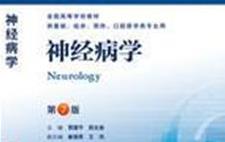摘要:
Compare and analyze the indicators of clinical neurological examination, MRI, auricular, su-jok diagnosis in patients after a stroke and with chronic cerebrovascular disorder to further substantiate the use of complementary methods in clinical practice, primarily as an express method. Group І-56 patients after a stroke in the early residual period, age 64 ± 7.1, including 23 men and 31 women. 48 (85.7%) patients had a stroke in the carotid vascular basin, 8 (14.3%) - in vertebral-basilar. Group II-30 patients with signs of chronic cerebrovascular disorders. All patients underwent clinical-neurological examination, MRI-examination, assessment of the condition of the auricula (skin and subcutaneous tissues) and the assessment of the distal phalanges of the thumbs and the hallux - their circumference at the level of the middle of the nail plate in mm was measured. All indicators were compared among each patient and I–II group indicators were compared with the data of 30 patients without vascular pathology of the brain. Clinical and neurological examination, which included the collection of complaints, anamnesis, the evaluation of objective indicators and MRI brain examination, verified the presence of a stroke and / or presence of chronic cerebrovascular disorders. All patients (100%) of first and second groups, regardless of gender and age, had trophic changes of varying degrees of severity in the area of the earlobe, ear antitragus, scaphoid fossa, posterior ear furrow, hypotrophy on both sides, more pronounced homolateral foci of a stroke, the presence of Frank’s furrow, mesh in the form of shallow furrows, excoriations in the area of the anti-tragus. Compliance of the changes was observed depending on the localization of the stroke: shallow furrows with vertebro-basilar strokes in the upper part of the ear lobe, the carotid stroke — in the mid-lower part. In 62%, there was a sharp change in the color of the skin of the auricle at the level of the posterior auricle
 中文科技期刊
中文科技期刊
详细信息
 中文科技期刊
中文科技期刊
详细信息
 ScienceDirect Journa...
ScienceDirect Journa...
详细信息
 中文科技期刊
中文科技期刊
详细信息
 中文科技期刊
中文科技期刊
详细信息
 欢迎来到三峡大学图书馆!
欢迎来到三峡大学图书馆!


